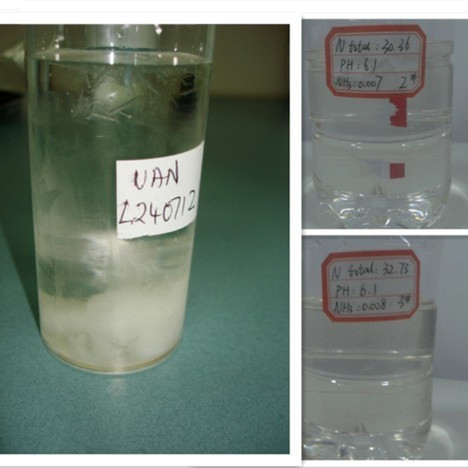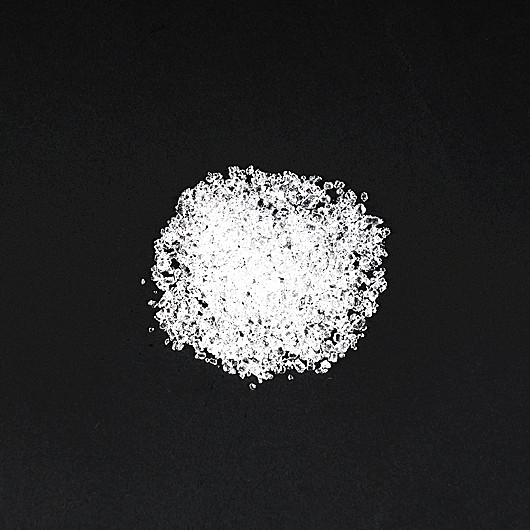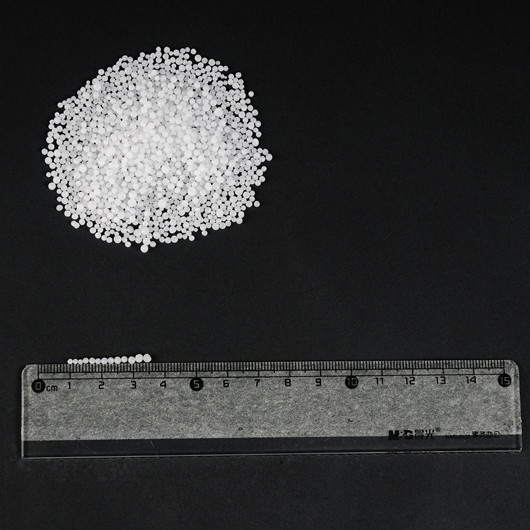Synthetic resins play a pivotal role in various industries, serving as essential components in the production of coatings, adhesives, and plastics. Among the myriad chemicals involved in resin formulations, urea emerges as a key player with a crucial role in enhancing performance and optimizing properties. This article delves into the multifaceted contributions of urea in synthetic resin formulations, highlighting its impact on the overall quality and functionality of these versatile materials.
Urea as a Reactivity Modifier
One of the primary functions of urea in synthetic resin formulations is its role as a reactivity modifier. Urea acts as a catalyst in polymerization reactions, influencing the rate at which monomers combine to form polymers. By adjusting the reactivity of the resin system, manufacturers can achieve precise control over curing times, ensuring optimal processing conditions and end-product properties.
Urea, a versatile compound derived from organic sources or synthesized through industrial processes, serves as a reactivity modifier in the realm of synthetic resin formulations. This pivotal role stems from its ability to act as a catalyst during polymerization reactions, influencing the kinetic aspects of the process.
Polymerization and Urea's Catalyst Role
Polymerization is the chemical process in which small, reactive molecules known as monomers combine to form larger, more complex structures called polymers. In the context of synthetic resins, this process is critical for the development of the desired material properties. Urea functions as a catalyst in this reaction, accelerating the rate at which monomers react and polymerize.
Influencing Reactivity and Curing Times
The reactivity of a resin system refers to how quickly or slowly the polymerization process occurs. Urea, as a catalyst, plays a key role in adjusting this reactivity. By carefully controlling the concentration of urea in the resin formulation, manufacturers can fine-tune the reaction kinetics. This control over reactivity allows for precise modulation of curing times—the duration required for the resin to solidify and attain its final form.
Achieving Optimal Processing Conditions
The ability to adjust the reactivity of a resin system with urea provides manufacturers with a powerful tool to optimize processing conditions. Different applications and manufacturing processes may demand specific curing times and material properties. Urea facilitates the tailoring of resin formulations to meet these requirements, ensuring that the resin cures at a rate compatible with the production process in use.
End-Product Properties and Quality Control
The impact of urea as a reactivity modifier extends beyond the manufacturing stage to influence the properties of the final resin product. Controlling the curing times and reactivity helps ensure that the resin achieves the desired characteristics, such as hardness, flexibility, and adhesion. This level of control is crucial for maintaining quality standards and consistency in the end products derived from these resin formulations.
Research and Development Implications
Urea's role as a reactivity modifier also has implications for research and development in the field of synthetic resins. Scientists and engineers can explore various formulations, adjusting the concentration of urea to study its effects on polymerization kinetics and the resulting material properties. This iterative process allows for continuous improvement and innovation in resin development.
Urea's function as a reactivity modifier in synthetic resin formulations is integral to achieving precise control over polymerization reactions. Its catalytic role influences curing times, facilitates optimal processing conditions, and ultimately contributes to the fine-tuning of end-product properties. This level of control not only enhances manufacturing efficiency but also opens avenues for innovation and customization in the development of synthetic resins for diverse applications.
Cross-Linking and Strength Enhancement
Urea is instrumental in the cross-linking of polymer chains within synthetic resins. Through its participation in chemical reactions during curing processes, urea facilitates the creation of strong and durable cross-links. This cross-linking imparts enhanced strength and resilience to the final resin product, making it well-suited for applications where mechanical performance is paramount, such as in high-performance coatings and structural adhesives.
Cross-linking is a crucial process in the development of synthetic resins, and urea plays a pivotal role in facilitating this phenomenon. During the curing process of resins, which involves the transformation of liquid or thermoplastic materials into solid structures, urea actively participates in chemical reactions that lead to the formation of cross-links between polymer chains. These cross-links act as bridges connecting adjacent polymer molecules, creating a three-dimensional network within the resin matrix.
Chemical Reactions in Cross-Linking
Urea engages in chemical reactions with functional groups present in the resin matrix. For example, in the case of formaldehyde-based resins like urea-formaldehyde resins, urea reacts with formaldehyde to produce reactive intermediates. These intermediates then form covalent bonds with the polymer chains, establishing cross-links. The nature of these bonds contributes to the overall strength and durability of the resin.
Enhanced Strength and Resilience
The cross-linking facilitated by urea imparts significant enhancements to the strength and resilience of the final resin product. The three-dimensional network formed by cross-links reinforces the molecular structure, making the resin more resistant to deformation, wear, and environmental stress. This enhanced strength is particularly advantageous in applications where mechanical performance is paramount, such as in high-performance coatings and structural adhesives.
Applications in High-Performance Coatings
In high-performance coating applications, the cross-linking promoted by urea ensures that the coating adheres strongly to the substrate and provides durable protection. The resulting material can withstand harsh environmental conditions, including exposure to UV radiation, temperature fluctuations, and chemical exposure. This makes urea-crosslinked resins valuable for applications ranging from automotive finishes to industrial coatings.
Role in Structural Adhesives
Structural adhesives require a combination of strength and flexibility to provide reliable bonding in various materials. Urea's contribution to cross-linking enhances the cohesive strength of the adhesive, making it well-suited for applications where bonding integrity is critical. The resilience imparted by cross-links ensures that the adhesive can withstand dynamic forces, making it suitable for use in structural components.
Balance Between Strength and Flexibility
Urea's role in cross-linking strikes a balance between strength and flexibility in the resin matrix. While the cross-links enhance strength, they also contribute to the flexibility of the material, preventing it from becoming excessively brittle. This balance is essential in applications where both rigidity and resilience are desired qualities.
Urea's involvement in the cross-linking of polymer chains within synthetic resins is a fundamental aspect of resin development. This process enhances the strength and resilience of the final product, making urea-crosslinked resins valuable for applications demanding superior mechanical performance, such as high-performance coatings and structural adhesives. The ability to tailor the level of cross-linking provides manufacturers with a versatile tool to meet specific performance requirements in various industrial applications.
Hydrogen Bonding and Stability
Urea's unique ability to form hydrogen bonds is another critical aspect of its contribution to synthetic resin formulations. These hydrogen bonds play a crucial role in stabilizing the resin matrix, influencing properties such as viscosity, adhesion, and thermal stability. The resulting improvements in resin stability contribute to the overall durability and longevity of products incorporating urea-modified resins.
Urea possesses a distinctive capability to form hydrogen bonds due to its molecular structure. Hydrogen bonds occur when hydrogen atoms, covalently bonded to electronegative atoms like nitrogen and oxygen, interact with other electronegative atoms. In urea, the amine groups (-NH2) can serve as both hydrogen bond donors and acceptors, facilitating the formation of these interactions.
Stabilizing the Resin Matrix
In synthetic resin formulations, urea's ability to form hydrogen bonds becomes a crucial factor in stabilizing the resin matrix. The hydrogen bonds act as molecular bridges between different polymer chains, contributing to the cohesion and structural integrity of the resin. This stabilization plays a key role in preventing the resin from undergoing undesirable changes, such as phase separation or degradation, over time.
Influence on Viscosity
Hydrogen bonding affects the viscosity of resin formulations. The intermolecular interactions created by hydrogen bonds contribute to the overall viscosity of the resin. The presence of urea, with its hydrogen bonding capability, can influence the flow properties of the resin during processing. Controlling viscosity is essential for various applications, including coatings and adhesives, as it impacts ease of application and the final appearance of the coated surface.
Enhanced Adhesion
Hydrogen bonding also contributes to improved adhesion properties in urea-modified resins. The formation of hydrogen bonds between the resin and the substrate enhances the bonding strength, promoting better adhesion. This is particularly valuable in applications where strong adhesion to diverse surfaces is required, such as in laminates, composite materials, or surface coatings.
Thermal Stability
The hydrogen bonding network established by urea can enhance the thermal stability of synthetic resins. These bonds help to distribute and dissipate heat within the resin matrix, preventing localized overheating and degradation. This improved thermal stability is significant in applications where the resin may be exposed to elevated temperatures during processing or in-service conditions.
Resin Durability and Longevity
The overall impact of hydrogen bonding on properties like stability, viscosity, adhesion, and thermal stability contributes to the durability and longevity of products incorporating urea-modified resins. Resins stabilized by hydrogen bonds are less prone to degradation, ensuring that the material maintains its performance characteristics over an extended period.
Tailoring Properties for Specific Applications
The ability to leverage hydrogen bonding allows formulators to tailor the properties of urea-modified resins for specific applications. By adjusting the concentration of urea and optimizing the hydrogen bonding network, manufacturers can fine-tune resin formulations to meet the specific requirements of diverse industries, ranging from automotive coatings to electronic encapsulation.
Urea's unique ability to form hydrogen bonds is a critical aspect of its contribution to synthetic resin formulations. The resulting stabilization of the resin matrix influences various properties, leading to improved viscosity control, enhanced adhesion, superior thermal stability, and ultimately, the durability and longevity of products incorporating urea-modified resins. This versatility makes urea a valuable component in the formulation toolbox for engineers and scientists working on advanced materials across a spectrum of applications.
Blending and Compatibility
Urea is also employed as a blending agent to improve the compatibility of different resin components. Its chemical structure allows urea to act as a bridging molecule, promoting the homogeneity of resin blends. This compatibility-enhancing function ensures that diverse resin components can be seamlessly integrated, leading to uniform material properties and improved processing characteristics.
In the realm of synthetic resin formulations, urea serves a crucial function as a blending agent. Its chemical structure and properties make it well-suited to act as a bridging molecule that facilitates the compatibility of different resin components. This blending capability is particularly valuable in creating resin formulations with tailored properties for specific applications.
Chemical Structure Facilitating Blending
Urea's molecular structure, characterized by amine groups (-NH2), enables it to interact with various functional groups present in different resin components. This interaction involves hydrogen bonding and other intermolecular forces, allowing urea to act as a mediator between different resin molecules. This bridging role is essential for promoting the uniform integration of diverse components.
Promoting Homogeneity in Resin Blends
When different resin components are combined in a formulation, achieving homogeneity is a critical challenge. Inhomogeneous blends may result in variations in material properties and compromise the overall performance of the resin. Urea, acting as a blending agent, promotes homogeneity by forming connections between different resin molecules. This ensures a more uniform distribution of components within the resin matrix.
Compatibility Enhancement
The compatibility-enhancing function of urea is particularly valuable when formulating resins that consist of multiple polymers or additives. Different polymers may have varying chemical structures and reactivity, leading to challenges in achieving a well-integrated and compatible blend. Urea's bridging role mitigates these challenges by fostering compatibility between different components, ultimately improving the overall performance of the resin.
Seamless Integration of Diverse Components
The use of urea as a blending agent enables the seamless integration of diverse resin components. This is advantageous when formulating resins with specific performance requirements, such as enhanced flexibility, durability, or adhesion. Urea helps create a synergistic effect among different components, resulting in a resin formulation that exhibits a balanced combination of properties.
Uniform Material Properties
The uniform distribution of resin components achieved through urea-mediated blending contributes to consistent material properties throughout the resin matrix. This uniformity is crucial for ensuring predictable and reproducible outcomes in terms of mechanical, thermal, and chemical properties. It also facilitates the manufacturing of products with reliable and standardized characteristics.
Improved Processing Characteristics
In addition to enhancing material properties, the compatibility-promoting function of urea contributes to improved processing characteristics. Resins that exhibit better compatibility are often easier to process during manufacturing. This can lead to advantages such as improved flow, reduced viscosity variations, and enhanced stability during processing, ultimately optimizing production efficiency.
Tailoring Resin Formulations for Specific Applications
The versatility of urea as a blending agent provides formulators with the flexibility to tailor resin formulations for specific applications. Whether in the development of coatings, adhesives, or composite materials, urea's role in promoting compatibility allows for the customization of resin properties to meet the diverse requirements of different industries.
Urea's employment as a blending agent is instrumental in achieving compatibility and homogeneity in synthetic resin formulations. Its bridging role, facilitated by its chemical structure, ensures the seamless integration of diverse resin components, leading to uniform material properties and improved processing characteristics. This versatility makes urea a valuable tool for formulators seeking to create resin formulations with enhanced performance for a wide range of applications.
Conclusion
In conclusion, the inclusion of urea in synthetic resin formulations is not merely incidental but rather a strategic choice to enhance reactivity, strength, stability, and compatibility. Manufacturers across industries benefit from the versatility of urea, as it contributes to the optimization of resin properties and, consequently, the performance of end products. As research continues to unveil new insights into chemical interactions, urea's crucial role in synthetic resin formulations will likely persist and evolve, shaping the landscape of materials science and industrial applications.



